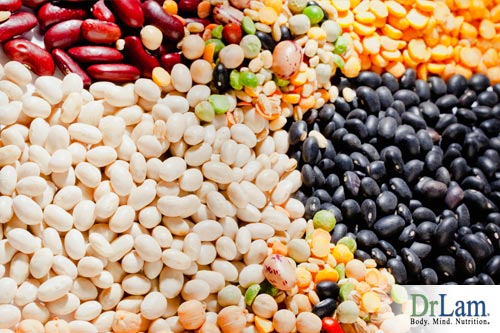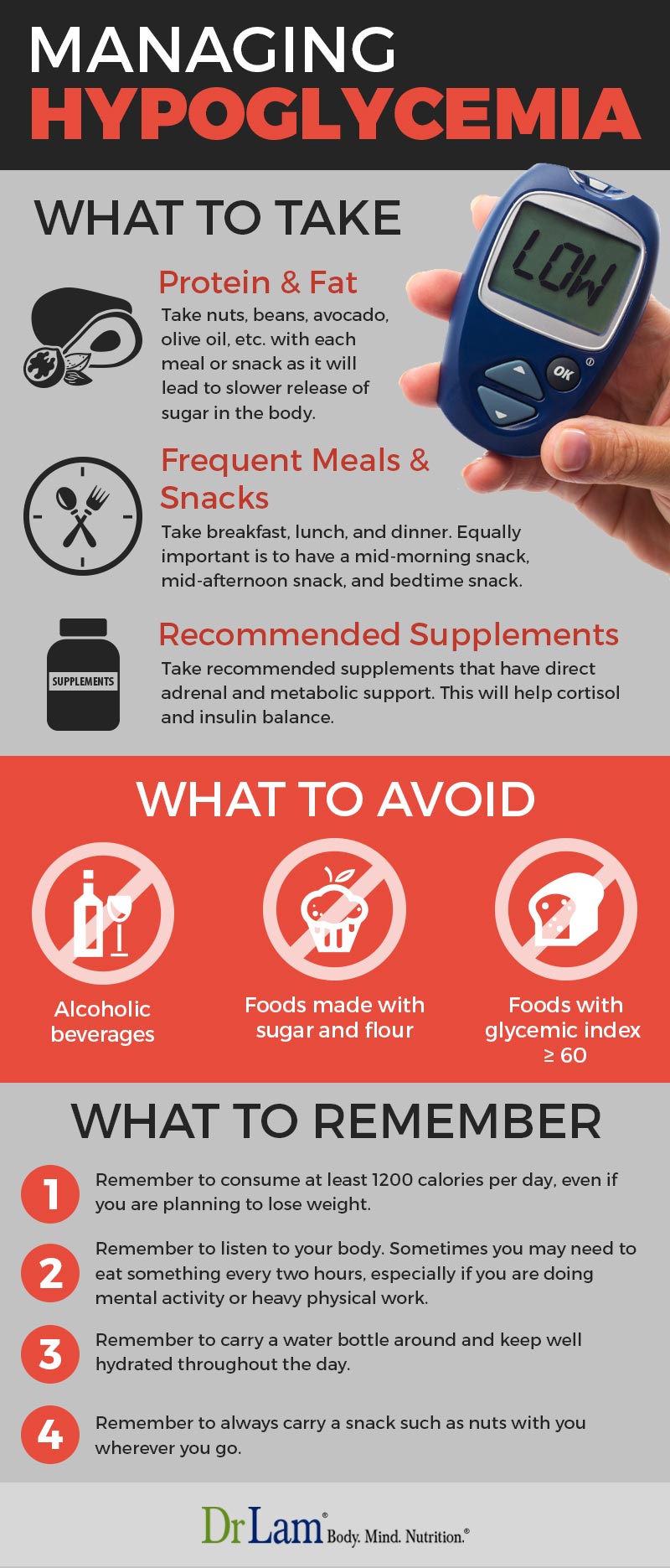 One of the classic signs of Adrenal Fatigue are hypoglycemia symptoms. Traditionally hypoglycemia is a medical term for a state produced by a lower than normal level of blood sugar.
One of the classic signs of Adrenal Fatigue are hypoglycemia symptoms. Traditionally hypoglycemia is a medical term for a state produced by a lower than normal level of blood sugar.
Unfortunately, no single glucose value alone satisfactorily gauges all people because many variables are involved. While there are no disagreements as to the normal range of blood sugar (90-110 mg/dl), debate continues as to what degree of hypoglycemia warrants medical evaluation and treatment, or can cause harm.
Throughout the 24-hour cycle of a day, blood plasma glucose levels of healthy people are generally maintained between 72 and 144 mg/dL (4-8 mmol/L) while 60 or 70 mg/dL (3.3 or 3.9 mmol/L) is commonly cited as the lower limit of normal glucose.
Many healthy people can occasionally have glucose levels in the hypoglycemic range without hypoglycemia symptoms of disease. This makes hypoglycemia a difficult clinical state to establish in the first place. The problem is further compounded in those with Adrenal Fatigue.
In Adrenal Fatigue, the hypoglycemia symptoms experienced is more often than not sub-clinical. This means that the person has clinical hypoglycemia symptoms even though the blood plasma level is invariably above 60-70 mg/dl. Their fasting serum blood sugar and glucose tolerance tests are usually normal. Conventional doctors not aware of the adrenal influence will miss this.
The diagram below shows how Adrenal Fatigue contributes to hypoglycemia symptoms. Compared to a normal person or even one with compromised insulin control, those with Adrenal Fatigue tend to have hypoglycemia symptoms even though the serum blood sugar may be within the normal range. This is clinically evident. After a meal, those with advanced Adrenal Fatigue tend to have a faster dip in serum blood sugar below the Hypoglycemic Symptoms Threshold (HSL) level compared to normal. This triggers symptoms of hypoglycemia such as irritability and fatigue. The more advanced the Adrenal Fatigue, the more the blood sugar curve is shifted towards the left. As a result, the time between completion of a meal to the onset of hypoglycemia symptoms is shortened.
For this reason, it is common for those with Stage 3 and beyond Adrenal Fatigue to require sugar replenishment every 2-3 hours. A small snack usually suffices. In fact, as Adrenal Fatigue recovers, this period lengthens. Those with Stage 2 Adrenal Fatigue can go 4-6 hours without food and not have hypoglycemia symptoms and hunger. Many in Stage 1 can skip a meal and have no symptoms at all.
Our body needs a continuous supply of energy to maintain homeostasis throughout the day. Cellular energy demand is met by intake of food, which is then converted into sugar. When this demand is not being met, as in Adrenal Fatigue, the body will turn to existing protein and fat as resources of energy. This pathway is not as efficient but, nevertheless is put on overdrive in order to provide the energy required. Without adequate cortisol levels to elevate blood sugar levels by facilitating the conversion of glycogen, fats, and proteins to new glucose supplies, this increased demand is difficult or impossible to meet. Irregular blood sugar patterns with hypoglycemia are common as the body tries to kick start the process whenever it detects a low blood sugar level. This leads to a variety of symptoms.
Hypoglycemia symptoms include hunger, nausea, headache, rage, lethargy, daydreams, confusion, amnesia, dizziness, fatigue, irritability, anxiety, jittery feelings, adrenaline rush, elevated heart rate, memory loss, and in severe cases, fainting, coma, and seizures.
Key hormones regulating blood sugar in the body include insulin, cortisol, and growth hormone. Conditions associated with Adrenal Fatigue that might also play a part in sugar regulation include Polycystic Ovarian Syndrome, metabolic syndrome, drug effects, adrenal insufficiency, and diabetes. In the absence of other medical reasons, one must consider Adrenal Fatigue as a cause.
Acute hypoglycemia can easily be temporarily reversed by taking 10-20 grams of carbohydrate (3-4 ounces of orange, apple or grape juice). While this can be overcome with a sugar fix consisting of an instant load of sugary drink or food such as coffee or soda, this is a quick solution emergency remedy only. Usually symptoms go away immediately, but return after 1-2 hours. Reactivation and restoration of normal cell function require extra amounts of energy beyond what is normally required for maintenance of normal energy burn. With each hypoglycemic episode, more cells are damaged. Thus, the body reaches a new low with each insult of hypoglycemia. If this happens at the same time as demand for glucose increases, the stage becomes set for an adrenal crisis. With each plunge, the Adrenal Fatigue increases and hypoglycemia worsens. By the end of the day, the person may feel nearly exhausted without having done anything. Low blood sugar times are most likely to occur at around 10:00 a.m., 2:00 p.m., and from 3-4:00 p.m.
Adrenal Fatigue requires a systematic and comprehensive approach to prevent and reverse the adrenal gland symptoms due to its chronic nature. Getting proper nutrition is also essential. Researching and creating a personalized hypoglycemia meal plan does not have to be difficult due to the number of options available. Here are some especially relevant tips from creating a hypoglycemia meal plan.


|
Glycemic Index Table
|
|||||||||||||
| Here is a list of common food products and their actual GI values. These numbers use Glucose as a baseline, which is given a GI of 100. Therefore, all other values are relative to glucose. | |||||||||||||
| Recommended for adrenal: GI <60 (Thus, avoid food with GI >60) |
Vegetables
|
Fruits
|
|||||||||||
|
Cereals
|
All Green Vegetables | 0 - 30 | Apple | 39 | |||||||||
|
Legumes
|
Grains
|
Pastas
|
Bread Products
|
All Bran | 43 | Bean Sprouts | OK | Apple Juice | 41 | ||||
| Baked Beans, canned | 68 | Barley, pearled | 25 | Angel Hair | 45 | Bagel | 72 | Bran Chex | 59 | Beets | 64 | Apricots, dried | 35 |
| Black Beans | 30 | Buckwheat (kasha) | 54 | Bean Threads | 26 | French Bread | 96 | Cheerios | 75 | Carrots | 71 - 92 | Bananas, ripe | 60 |
| Black Eyed Peas | 42 | Bulgar | 47 | Gnocchi | 67 | Kaiser Roll | 73 | Corn Bran | 75 | Cauliflower | OK | Cantaloupe | 65 |
| Butter Beans | 31 | Couscous | 65 | Pastas, brown rice | 92 | Melba Toast | 71 | Corn Chex | 83 | Corn | 58 | Cherries | 23 |
| Chick Peas | 33 | Cornmeal | 68 | Pastas, refined | 65 | Pita Bread | 58 | Cornflakes | 84 | Eggplant | OK | Grapefruit | 25 |
| Chick Peas, canned | 42 | Millet | 71 | Pastas, whole grain | 45 | Pumpernickel Bread | 49 | Cream of Wheat | 71 | All onions | OK | Grapefruit Juice | 49 |
| Fava Beans | 80 | Rice, brown | 56 | Star Pastina | 38 | Rye Bread | 64 | Grapenuts | 68 | Parsnips | 97 | Grapes | 46 |
| Kidney Beans | 30 | Rice, instant | 85 - 91 | Vermicelli | 35 | Rye Bread, whole | 50 | Life | 66 | Peppers | OK | Kiwi | 52 |
| Kidney Beans, canned | 52 | Rice, white | 70 |
Snacks, Misc
|
Stuffing | 75 | Muesli | 60 | Potato, russet (baked) | 90 | Mango | 56 | |
| Lentils, green | 30 |
Crackers
|
Corn Chips | 70 | Tortilla, corn | 70 | Nutri Grain | 66 | Potato, instant mashed | 83 | Orange | 42 | |
| Lentils, red | 25 | Graham Crackers | 74 | Fried Pork Rinds | OK | Waffles | 76 | Oat Bran | 55 | Potato, fresh mashed | 73 | Orange Juice | 51 |
| Lima, baby, frozen | 32 | Rice Cakes | 77 | Olives | OK | White Bread | 95 | Oatmeal, regular | 53 | Potato, new, boiled | 57 | Papaya | 58 |
| Pinto Beans | 39 | Rye Crispbread | 67 | Peanuts | 10 | Whole Wheat Bread | 75 | Oatmeal, quick | 66 | Potato, french fried | 75 | Peach | 35 |
| Soy Beans | 18 | Stoned Wheat Thins | 68 | Peanut M&M's | 32 |
Dairy Products
|
Puffed Wheat | 74 | Radishes | OK | Pear | 35 | |
| Split Peas | 32 | Water Crackers | 72 | Popcorn | 56 | Ice Cream, regular | 61 | Puffed Rice | 90 | Sauerkraut | OK | Pineapple | 66 |
| Potato Chips | 55 | Ice Cream, low-fat | 50 | Rice Chex | 89 | Sweet Potato | 54 | Pineapple Juice | 43 | ||||
| Pretzels | 82 | Milk, regular | 27 | Rice Krispies | 82 | Tomato | 38 | Plum | 29 | ||||
| Rice Cakes | 77 | Milk, skim | 32 | Shredded Wheat | 69 | Water Chestnuts | OK | Raisins | 64 | ||||
| Rich Tea Cookies | 56 | Yogurt, sugar | 33 | Special K | 54 | Yams | 51 | Strawberries | 32 | ||||
| Vanilla Wafers | 77 | Yogurt, aspartame | 14 | Total | 76 | Yellow Squash | OK | Watermelon | 74 | ||||
To battle hypoglycemia – both the use or natural foods or protein shakes may help.